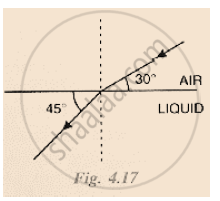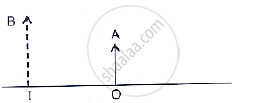Advertisements
Advertisements
प्रश्न
A student focuses the image of a well-illuminated distant object on a screen using a convex lens. After that, he gradually moves the object towards the lens and each time focuses its image on the screen by adjusting the lens.
(i) In which direction, towards the screen or away from the screen, does he move the lens?
(ii) What happens to the size of the image? Does it decrease or increase?
(iii) What happens to the image on the screen when he moves the object very close to the lens?
उत्तर
(i) As the object is moved towards the lens, the image distance increases. Thus, the student moves the lens away from the screen to focus the image.
(ii) The size of the image increases when the object is moved towards the lens.
(iii) When the object is moved very close to the lens, no image is formed on the screen. A virtual image is formed behind the object on the same side of the screen.
APPEARS IN
संबंधित प्रश्न
An object is placed at a distance of 15 cm from a concave lens of focal length 30 cm. List four characteristics (nature, position, etc.) of the image formed by the lens.
Draw a ray diagram to show the formation of the image of an object be placed so that a real and inverted image of the same size as the object is obtained using a convex lens
Draw a labelled ray diagram to show how a ray of light is refracted when it passes:
from air into an optically denser medium.
Describe with the help of a ray-diagram, the formation of image of a finite object placed in front of convex lens between f and 2f. Give two characteristics of the image so formed.
A convex lens produces an inverted image magnified three times of an object placed at a distance of 15 cm from it. Calculate focal length of the lens.
In a certain murder investigation, it was important to discover whether the victim was long-sighted or short-sighted. How could a detective decide by examining his spectacles?
The diagram alongside shows the refraction of a ray of light from sir to a liquid.
(a) write the values of (i) angle of incidence, (ii) angle of refraction.
(b) use snell’s law to find the refractive index of liquid with respect to air.

The given below figure shows an object OA and its image IB formed by a lens. State three characteristics of the image.

State two applications of a convex lens.
A convex lens of focal length 20 cm can produce a magnified virtual as well as real image. Is this a correct statement? If yes, where shall the object be placed in each case for obtaining these images?
